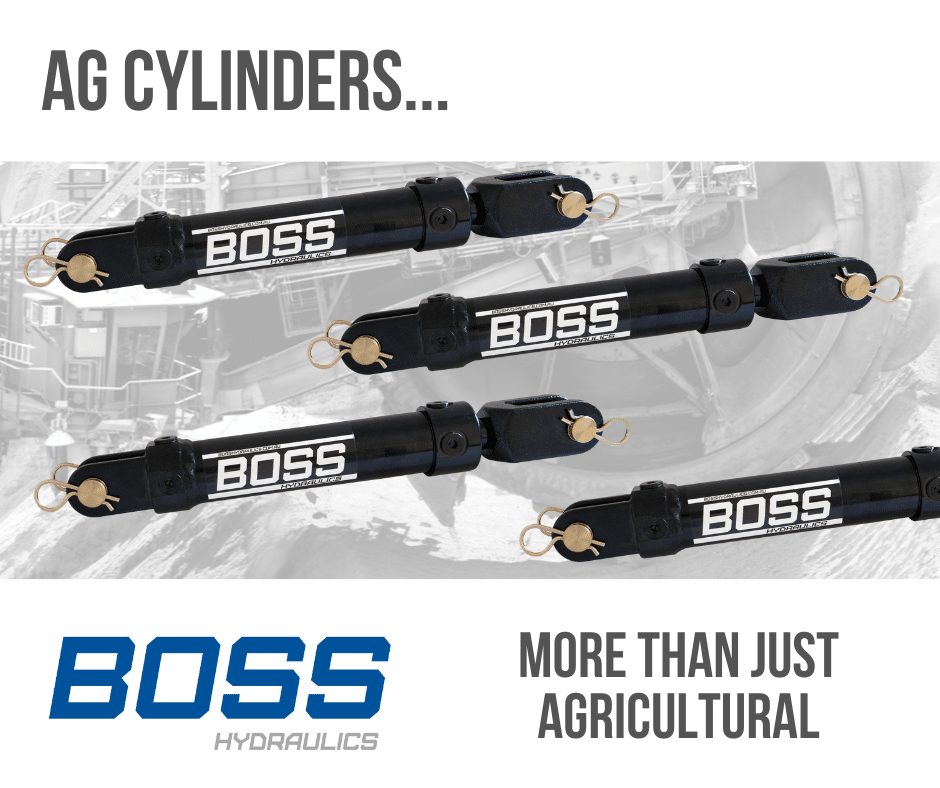
Low-pressure hydraulic cylinders (or Ag Cylinders) are devices used to convert fluid power into linear mechanical force and motion. They operate under relatively low pressures compared to high-pressure hydraulic systems commonly used in heavy machinery and industrial applications. Low-pressure hydraulic cylinders are typically found in lighter-duty applications where high force requirements are not necessary.
Function: The primary function of low-pressure hydraulic cylinders is to move or push loads in a straight line using the force generated by the hydraulic fluid. These cylinders are commonly used in automotive applications, farm machinery, and equipment where precise and controlled linear movement is required.
Working Principle: The basic components of a low-pressure hydraulic cylinder include a cylinder barrel, a piston, a piston rod, and end caps. Here’s how they work:
- Cylinder Barrel: This is a cylindrical tube that houses the other components and provides the structure for the hydraulic cylinder.
- Piston: The piston is a cylindrical component that fits inside the cylinder barrel and creates a sealed chamber. It divides the cylinder into two chambers, one on each side of the piston.
- Piston Rod: The piston rod is connected to the piston and extends through one end cap of the cylinder. It is the part that transmits the linear force generated by the hydraulic fluid to the external load.
- Hydraulic Fluid: Low-pressure hydraulic cylinders use a hydraulic fluid, typically oil, to generate force. The fluid is stored in one of the chambers (the one behind the piston).
- Fluid Flow: When hydraulic fluid is pumped into the chamber behind the piston, it applies pressure on the piston, causing it to move towards the other end of the cylinder.
- Load Movement: As the piston moves, it pushes the piston rod and any attached load in a linear direction. The load movement is controlled and smooth due to the incompressible nature of the hydraulic fluid.
- Return Stroke: To retract the piston and the load, the hydraulic fluid is pumped into the chamber on the opposite side of the piston, causing it to move in the opposite direction.
The control of the hydraulic fluid flow into and out of the cylinder is managed by valves and a hydraulic pump. These components work together to create a controlled and repeatable linear motion for the specific application’s needs.
The BOSS BLACK range of AG Cylinders are 100% pressure tested and designed with Dual Ported UN-O-ring threads. This innovation provides 2 ports at the rod end and 2 ports at the rear clevis end of the cylinder to suit a wider variety of applications. All BOSS BLACK cylinder piston rods are hard chrome plated, the barrel is CDSM honed and the rod gland is manufactured from ASTM A536 ductile iron.
Find out more at https://www.bosshydraulics.com.au/products/boss-black/agricultural-cylinders/
